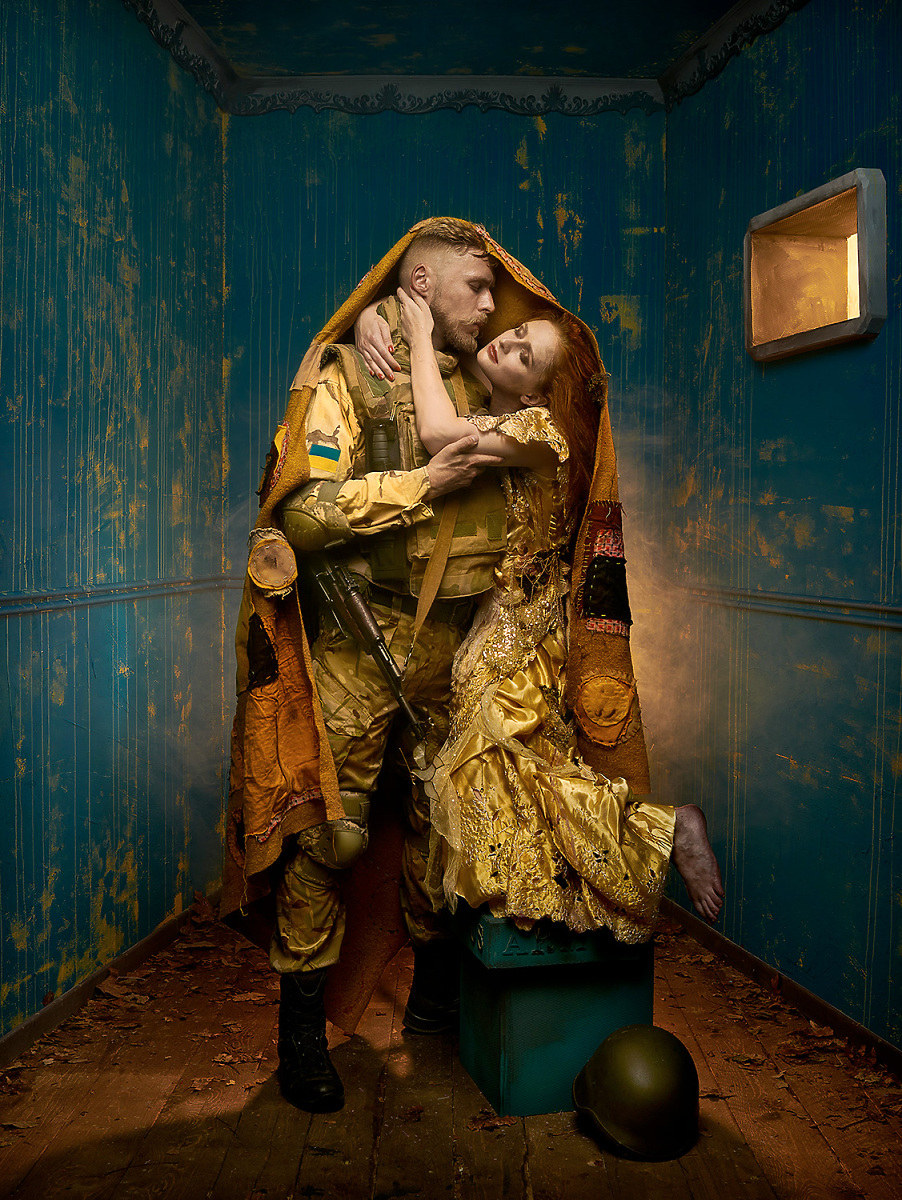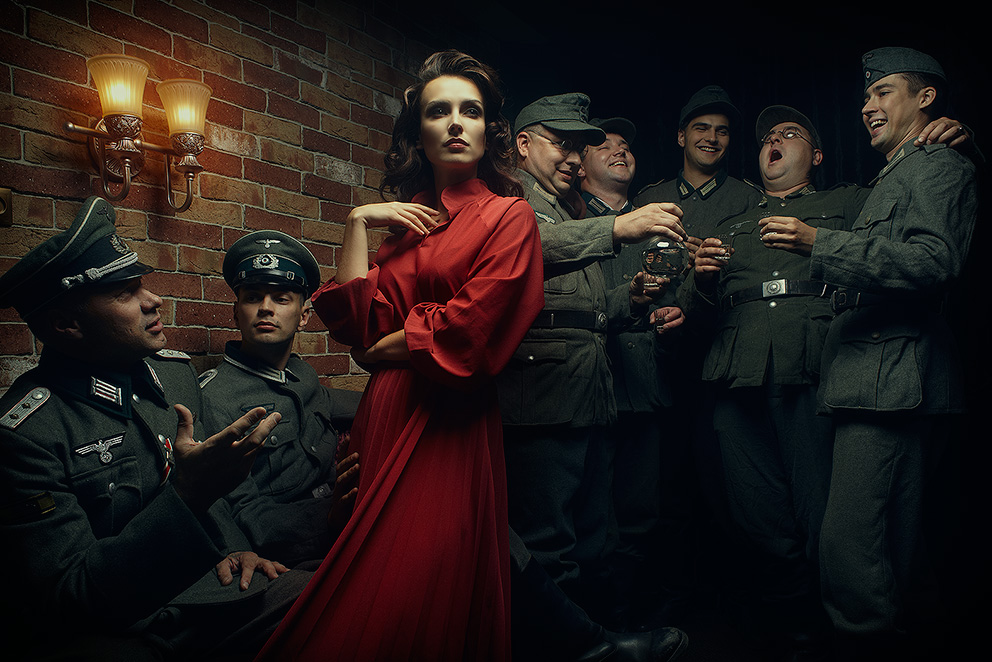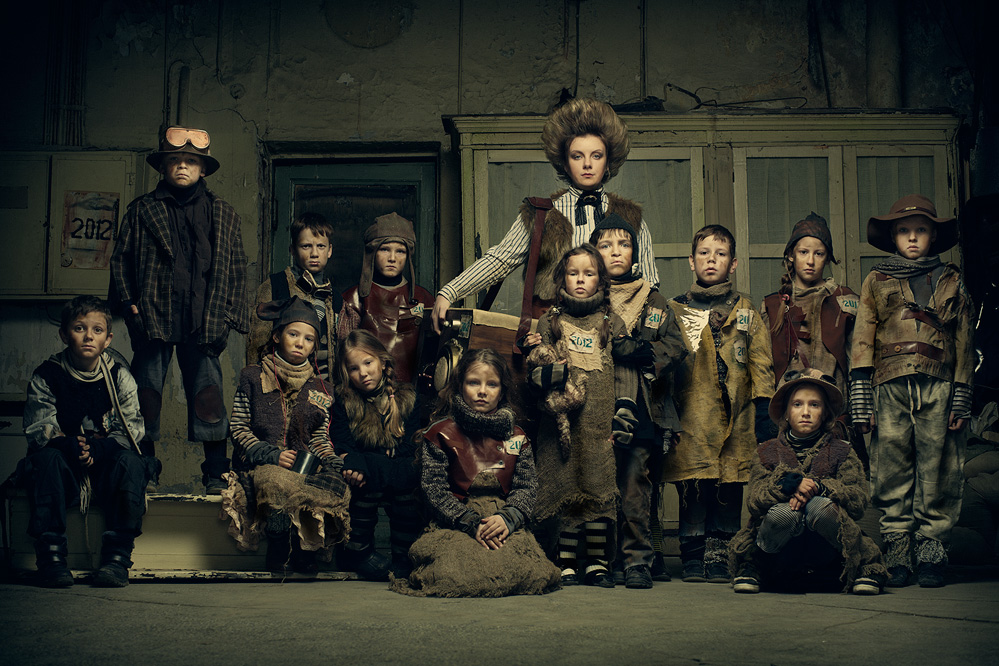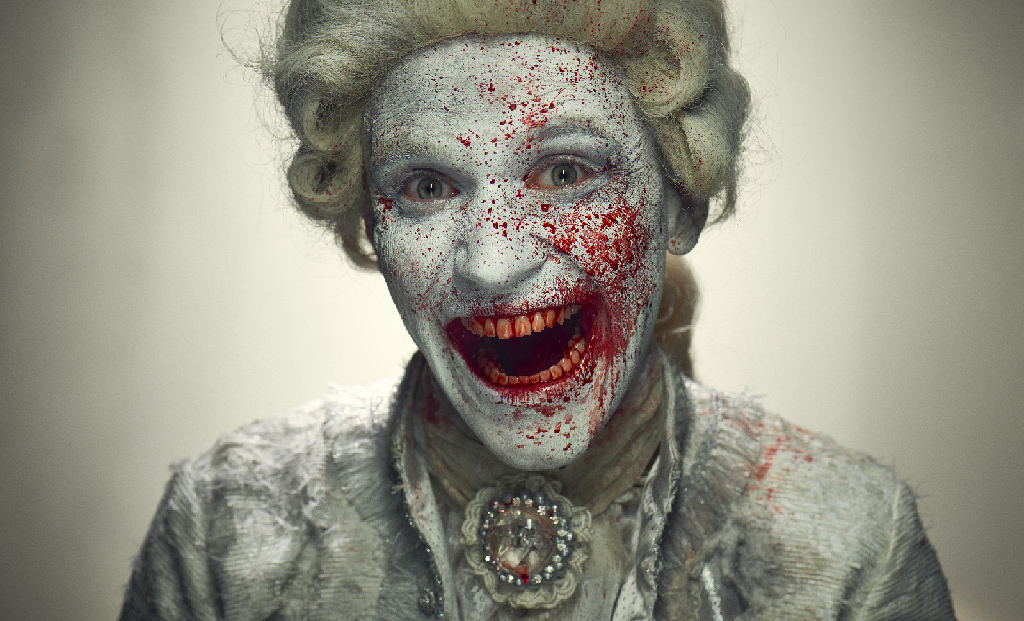How an Anti-Putin Russian Refugee Artist Supports Ukraine Through His Works.

How long have you been creating art? How would you describe yourself as an artist - your medium, your viewpoint?
I've been into photography since childhood, although during my past life I had to work in different fields. I was a truck driver, a mechanic, a loader, but I almost never parted with my camera. I am good at using a camera as a profession, but if we talk about art, I prefer staging. It may sound pretentious, but I see myself as more a director of the theater than a photographer.
by Kerry McElroy | November 2023
The romantic story behind a Russian photographer's
version of Klimt's Kiss painting, restaged for Ukraine 2022
The Art Newspaper. Paula Erizanu

Andrey Kezzyn recounts how hearing a tale of two lovers separated by the war spurred him to remake the famous art historical image. For the past decade, the Russian artist Andrey Kezzyn has been creating photographs which he describes as "postmodern copies of Klimt". The first idea for a wartime version of Klimt's famed painting The Kiss (1907-08) came to Kezzyn in 2014, when Russia annexed Crimea. He was living in St Petersburg with his family at the time. He was alarmed by the aggressive rhetoric that took over Russian television around then. But he reached his tipping point when his son came back from school one day and asked him to buy him a telnyashka, a striped shirt worn by Russian military, for a parade where he and his classmates had to sing a military anthem. "I knew then we had to leave Russia," he explains. Kezzyn and his wife applied for artist visas and moved to Berlin with their two children.
Andrey Kezzyn shares his nightmares
By Raymond Johnston. Praguepost, 17 November 2013

Russian photographer creates fantasy images from films that will never be made
Some of the photos, at first glance, look like covers for tawdry novels or posters for b-grade horror films. They have that look of something that has been heavily retouched. There are almost no shadows. The facial expressions seem a little unreal and the details, such as horns and pig noses, orghostly faces must have been added later. Saint Petersburg-based photographer Andrey Kezzyn begs to differ. He says that he meticulously creates each scene and does no alterations afterward. “It’s very simple. I don’t use Photoshop; it is a natural photograph. I am very technical,” he told the Prague Post. He attributes the style to several things: a good camera, a lot of assistants and helpers, good lighting, and good preparation.
Andrey Kezzyn. Why so serious?
By Luciana Acuña. Arte Al Limite 03/10/2014

From Saint Petersburg, thanks to his grandfather, the artist is interested in photography, a pastime that he considers common of the average citizen of the USSR being that “everybody had a camera like Zenit or Smena or FED, a Soviet analogue of Leica, and developed films and printed black and white photos in the bathroom, again the Soviet analogue of a darkroom. The bathroom converted into the darkroom for a couple of hours with the help of several wooden planks and red lamps and after the session was converted back into bathroom,” Kezzyn says.
Andrey Kezzyn on Widewalls

The surreal and bizarre iconography in the photographic work of Andrey Kezzyn has a central role. His series represent narratives from another world perhaps from the deepest corners of the human mind. By referring to popular culture, art or historical phenomenon’s, Kezzyn inserts several layers of meanings which make his art a reflection of political, religious and moral values of contemporary society. Prone to theatricality and grandiose settings, the artist produces staged shoots that look like leftovers of the material that was not used for the final cut off some movie spectacle.
Andrew Kezzyn: interview with the tooth fairy
Some questions to the renowned Russian photographer.
By Nicola Maronga

Sometimes all of us get those weird dreams in which you say “wtf?!” when you wake up. A mix of real life experiences and fantastic characters that we wonder how our brains were able to create. Seems like Andrew Kezzyn has the ability to frame all this in a picture. And he spend quite a lot of time to make that shareable with the world around him.
In each of his works, Andrew has an opinion to share, his point of view. His interpretation on the weirder parts of our existence, or against whatever our brains has been filled with since we born.
Or maybe, this is just my own conjecture.
Let’s see what he has to say.
